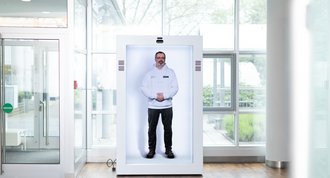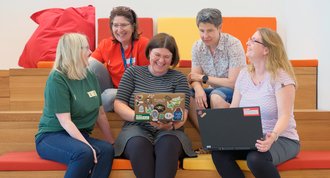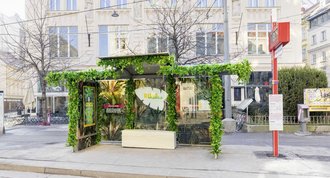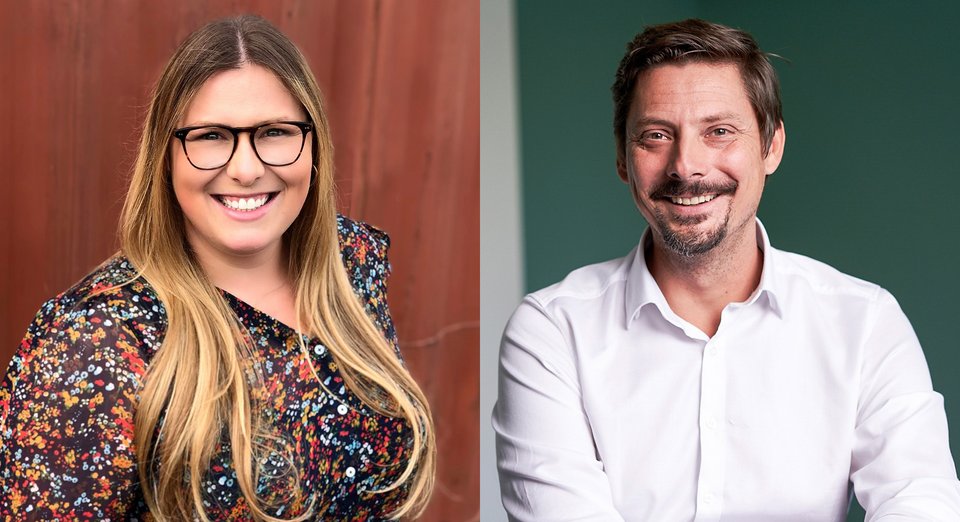
Catrin Bluhm from REWE digital and Marko Scheffler from REWE Systems are managing the Horizon project and are thus also setting the course for the two IT units to grow together. We spoke to the two project managers about the status of Horizon, new cultural formats and the importance of transformation.
one: The Horizon project was launched around six months ago. What is the current status?
Marko Scheffler : We started the project on 19 January and have subsequently established 20 sub-projects - also known as workstreams. Our interim assessment after just over six months is very positive: we have already achieved just over half of what we set out to do. Several workstreams have already been completed and various quick wins and long-term successes have been realised. In the sub-projects that are still ongoing, the colleagues are all on track with the target definition.
Catrin Bluhm: During the first half of the project, it was a big and important step for both IT organisations to find themselves in the project. A crucial prerequisite for this was that we formed tandems from both IT units in all workstreams. We made a point of appointing colleagues from REWE digital and REWE Systems for all areas and ensuring that the sub-project teams had equal representation - as is the case with us as project managers.
one: So how did the collaboration work?
Marko Scheffler : Two things created the conditions for good collaboration: We organised a kick-off with each workstream. It was important for us to bring the right people together at the start and to ensure that they engage in dialogue and get to know each other. The people with overall responsibility for the Horizon project, the so-called sponsors, were also present at these meetings. In this case, these are the managing directors Robert Zores, André Marburger, Stefan Matzelle and Thomas Friedl. Christoph Eltze, as the responsible member of the Management Board, is also on board as a sponsor.
The second point was that we gave our colleagues maximum freedom to set and define their goals. We did have to make adjustments here because the objectives of the individual workstreams varied greatly in terms of scope and depth. But it encouraged good collaboration and a shared focus on solutions.
one: Five different areas were established in the project: Culture, Organisation, Branding, HR and Communication. In turn, there are numerous workstreams. Did all sub-projects start in parallel or were there priorities at the start?
Catrin Bluhm: All workstreams started in parallel. However, at the beginning, the focus was more on culture and communication. Ten different communication and cultural formats were established for Horizon and adapted again and again over the course of the project. At the beginning, regular public meetings for all employees with two members of the managing directors were essential. We call these meetings "meet Horizon". this is how we announced the project and initially offered a daily meet Horizon where questions could be asked openly and concerns expressed. As the project progressed, we slowly scaled back the format based on the feedback we received. Other forms of communication then became more important.
A good example is the so-called "UnConference". An interactive conference by employees for employees. It offers various opportunities for communication, from workshops to panel discussions on a predefined topic. Between 200 and 300 colleagues have registered for this format each time. A third example is our project-related newsletter. We now send it out every fortnight and are very satisfied with the read rate.
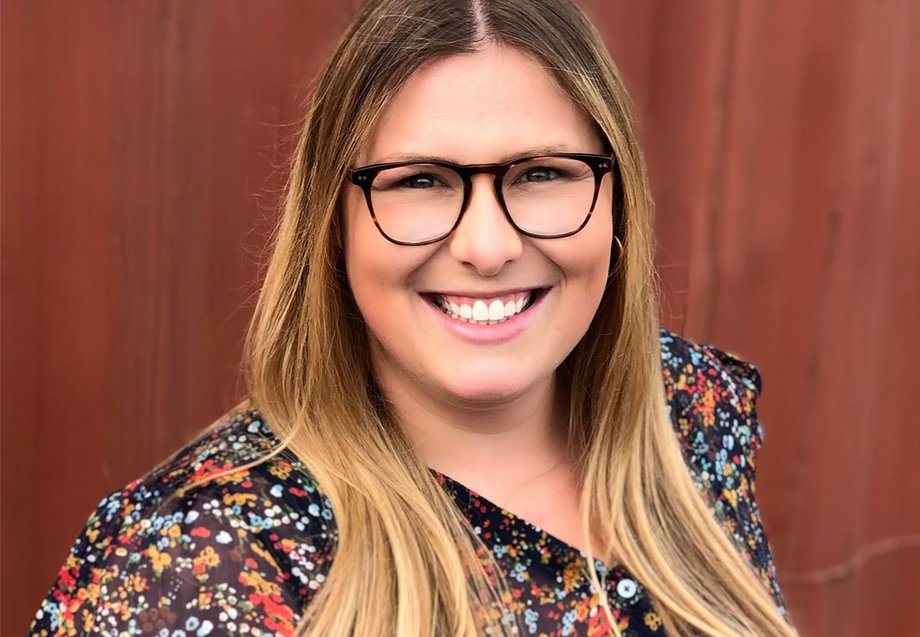 Catrin Bluhm
Catrin Bluhm
one: What were the most pressing questions from employees at the start of meet Horizon?
Marko Scheffler: At the beginning, a lot of key questions were asked, such as: Why is the project starting right now? What is the target image? Why is the next transformation coming straight after Symphony? But many employees also wanted to know how they can get involved, what formats are available and where the journey is heading in general.
In addition to the question of why the next transformation comes directly after Symphony, we discovered during the course of the project that it was enormously helpful that Symphony was carried out beforehand and that we are now already dealing with two organisations that work in a product-oriented and agile way. This makes it much easier to develop the topics in Horizon.
one: In your opinion, what factor has contributed most to the teams finding each other and growing together?
Catrin Bluhm : It was the interplay of many small aspects that worked well. One important factor was certainly that the teams quickly started communicating and entering into dialogue. As soon as the colleagues were able to talk about hard facts together and work together on the project and solutions, the knots gradually started to break. The most important thing was simply to get to know each other and listen to what the others were doing.
We want to continue to support this with cultural and communication formats. Another important factor was that we have equal representation in project management, in the Transformation Office and in the workstreams. This has sent a strong signal to both units.
one: Have there already been any initial results, successes or quick wins?
Marko Scheffler: As I mentioned at the beginning, some workstreams have already completed their work. A good example is our 40 or so IT architects. They have come together as a team and are working together in the new organisation. Work has also already been completed in the areas of licence management and data protection. The aim here was to standardise documentation and processes.there were reorganisations in the important areas of cloud and security. For both areas, we created the basis for two joint future competence centres in the project, which will offer their expertise for all IT products. These competence centres are already playing a key role within IT and will continue to do so in the future.
Catrin Bluhm: Technical and bureaucratic hurdles were an important point. A practical example: it was inconvenient for REWE digital employees to work in Porz and vice versa for colleagues from REWE Systems in Carlswerk. Removing these barriers in terms of technology and access to buildings was also a huge step forward in terms of collaboration.these soft factors are enormously important for the two units to grow together.
one: Transformation processes are always an additional workload. Are there simple ways to efficiently combine change processes and day-to-day business?
Catrin Bluhm: The additional workload should not be underestimated. The project is only so successful because all colleagues go the extra mile. We looked in advance at areas where time resources could be freed up and projects deprioritised. Nevertheless, a change process like this is a huge effort. That's why it was always important for us to communicate this to all employees: It's worth going the extra mile because things will become simpler, leaner and more efficient as a result, which will reduce the workload. Many of our colleagues have also realised this and therefore support Horizon.
Marko Scheffler : As project managers, we have the advantage that Horizon is our day-to-day business. For everyone else, it has been added on top. That has to be recognised and appreciated. That's why it's also important for us to complete the project within a reasonable time frame. We will then have a lowest common denominator in the new organisation from which we can plan the next steps.the project is only the impetus for change. After the project, the organisation itself will be in a position to shape constant changes in the environment.
 Marko Scheffler
Marko Scheffler
one: Horizon's goal is to become "an awesome IT organisation ". What makes such an IT organisation? And what are the next steps in this direction?
Marko Scheffler: 'Great IT' means IT that works, offers customers and our colleagues added value at all times and ultimately gives REWE Group a digital edge. With this common goal, we will continue to work on solutions in integrative teams, identify new business models and IT products - but also continuously scrutinise existing ones. We can only optimally set up these teams together, with a modern technological basis, a shared culture of values and the ability to constantly adapt as an organisation. If all of this comes together, we will be an attractive employer in a competitive labour market.
Catrin Bluhm: One thing is clear: when we complete the Horizon project at the end of the year, we will not have reached the end. We still have a way to go, giving everyone the chance to help shape and mould the new IT. However, we must also recognise that we are in a rapidly changing environment in which we have to sit down together again and again to see whether we are still on the right path. We always need small transformations and further developments in order to remain a modern and future-oriented IT organisation.



